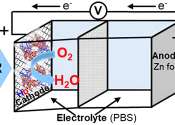Standardizing 'low-cost' air quality monitors to help measure pollution
In a recent paper published in Nature Reviews Physics, Professor Richard Brown and Dr. Nick Martin, discuss how the standardization of 'low-cost' air quality monitors can help measure pollution.
Mar 17, 2023
0
6









